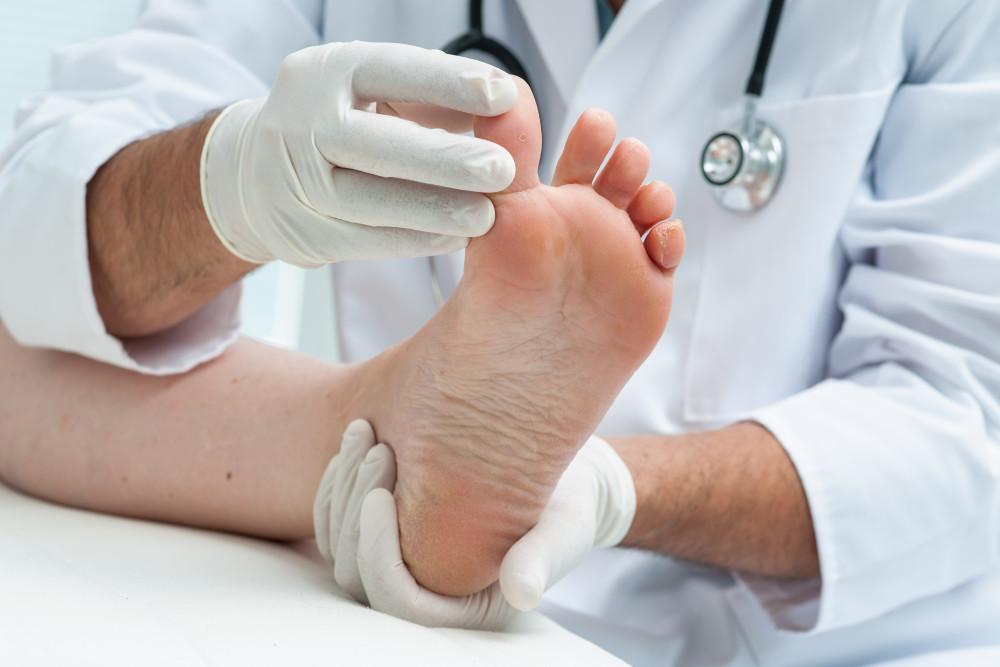
How to Treat an Ingrown Toenail

Ingrown toenails can develop for several reasons. Some people get ingrown toenails because they wear tight shoes. Other people get ingrown toenails because their toes get injured, they cut their nails too short, or they cut their nails at an angle.
If you have an ingrown toenail, then you probably experience intense pain. Dr. Rambacher has years of experience treating ingrown toenails and similar conditions, so he can help treat the condition and teach you how to avoid future ingrown toenails.
In our experience, the following four treatment options are very effective for ingrown toenails.
1. Use an antibiotic to reduce swelling and pain
The swelling and pain that you experience with an ingrown toenail often come from bacteria that gets trapped between the nail and your skin.
Dr. Rambacher recommends using a topical antibiotic to kill the bacteria. If that doesn’t work, then he may prescribe oral antibiotics.
2. Take over-the-counter pain relievers
The pain caused by ingrown toenails can get quite severe. Still, we find that over-the-counter pain relievers like aspirin and ibuprofen have enough strength to lessen the discomfort considerably.
If you have so much pain that you cannot walk, take a pain reliever to see how your ingrown toenail reacts. You may still feel some discomfort, but it should lessen quite a bit.
OTC pain relievers aren’t a great long-term solution, but they can make you comfortable on particularly painful days or while you wait for your appointment with Dr. Rambacher.
3. Have part of the toenail removed
Learning how to cut your toenails the right way and avoiding tight-fitting shoes usually prevents ingrown toenails in the future. Some people, however, can’t fix the problem on their own.
Unfortunately, their toenails grow in a such a way that they will eventually cause pain.
If this describes your situation, then Dr. Rambacher may want to remove a part of your toenail. After removing part of the toenail, the nail can’t grow into your skin.
Dr. Rambacher can even use laser therapy to target highly specific parts of your toenail. If necessary, he can use laser therapy to remove recurring ingrown toenails at their roots.
4. Soak the ingrown toenail in warm water or apple cider vinegar
While you wait for your appointment with Dr. Rambacher, you can get some relief from ingrown toenail pain by soaking your foot in warm water for 10 to 15 minutes. You can soak your feet up to four times a day for maximum relief.
The warm water will reduce swelling to reduce the pain you feel.
If you have apple cider vinegar around your house, you can soak your foot in it for relief. Apple cider vinegar will kill some of the bacteria in your ingrown toenail and reduce inflammation.
For the best result, fill a basin with warm water and add a quarter cup of apple cider vinegar.
Schedule an appointment with Dr. RambacherIt’s a good idea to schedule an appointment with Dr. Rambacher as soon as you notice the symptoms of an ingrown toenail. The small pain that you feel today can turn into excruciating pain by tomorrow. The sooner you come to our office, the sooner you can rid yourself of this painful problem.
You can schedule an appointment with Dr. Rambacher by sending us a message through our secure website. If you prefer using your phone, dial 949-916-0077 to talk to someone in our Mission Viejo office.
We’re open Monday, Tuesday, Thursday, and Friday from 9am to 5pm We stay open until 7pm on Wednesday for your convenience. Book your appointment now so Dr. Rambacher can diagnose your ingrown toenail and decide what treatment option will work best for you.
You Might Also Enjoy...


How to Keep Toenail Fungus from Spreading

5 Diabetes-Friendly Ways to Care for Your Feet

How to Tell if Your Foot is Sprained or Broken

5 Conservative Treatments for Hammertoes

